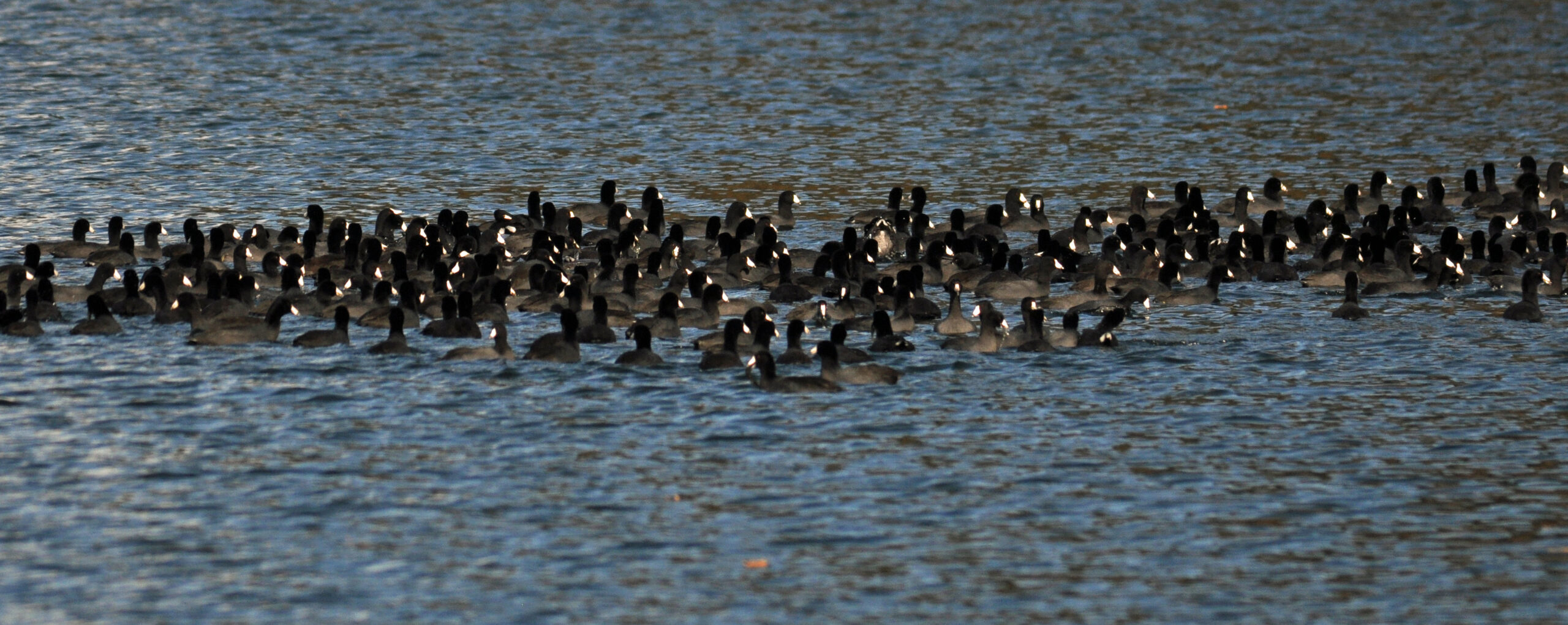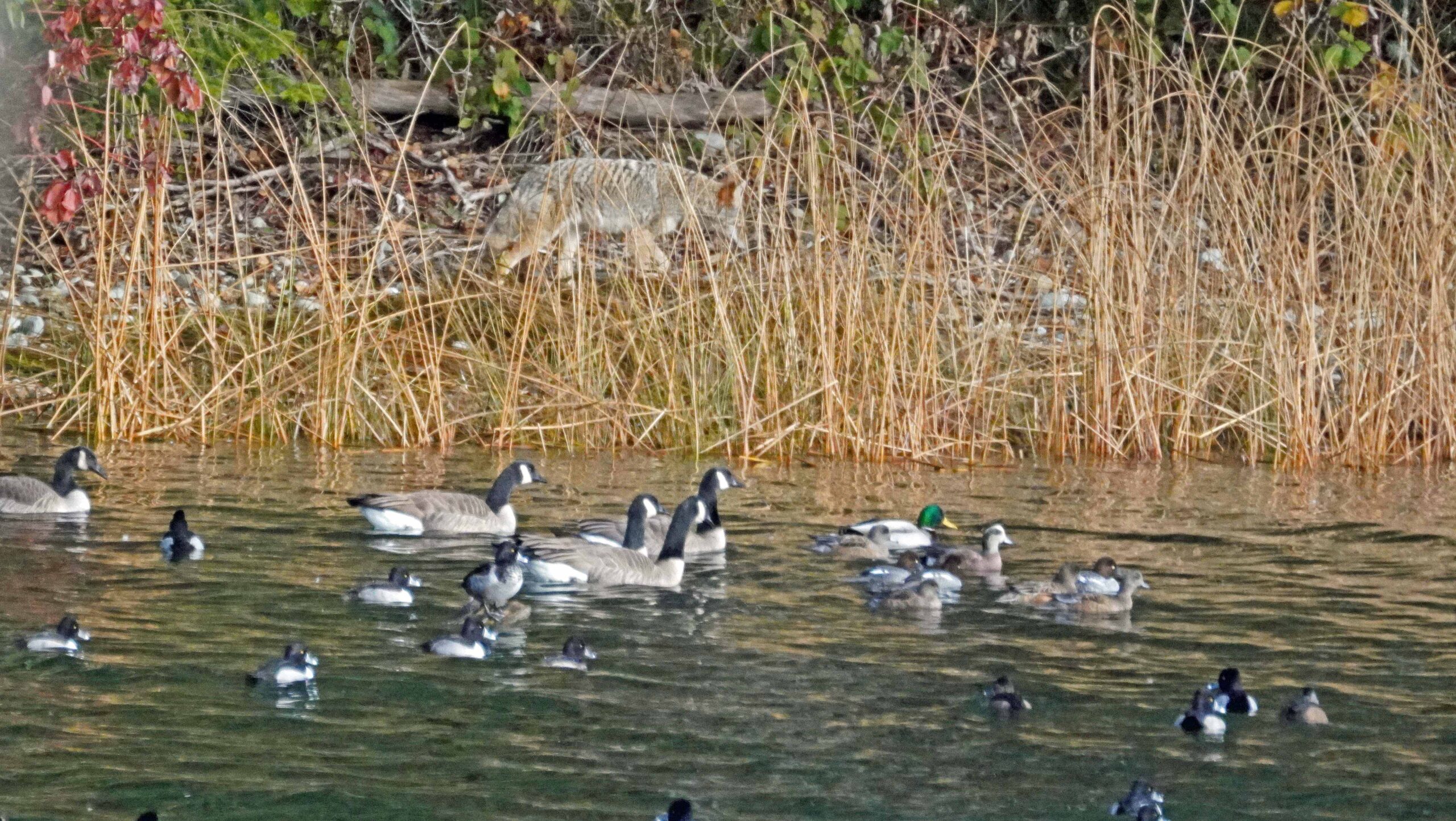No matter how chilly temperatures here in the northwest get there are a couple of animals you can always depend on seeing. Birds and coyotes. And sometimes both at once! Coyotes pop up just about everywhere and are usually seen just individually. Packs up to 7 exist and are mainly families. As you know they do not tolerate anybody else to joint their group. Here’s one trotting along very close to Canada Geese, Mallards, and Coots. Probably looking for lunch, but the birds did not seem at all nervous. The coyote trotted away without trying to get anything. Anhingas love to take over the empty boat docks in the winter. And when you get a close look at Coot flocks, here is what you see.
The increased flocking of certain waterfowls as the weather cools is surprising. Sure, Canada Geese flock in astounding numbers at all times of the year. That is no surprise to just about anyone living in this area. But I notice that in the colder temperatures they seem much more content to gather with other flocks in the water. I’ve seen this behavior numerous times on American Lake in JBLM, as seen in the above photos. Then there are the waterfowl that put on the biggest winter weather show – Coots. Congregating in huge flocks in the water they tend to travel in extraordinarily lengthy formations, a behavior I have never observed them doing in warmer seasons. Then we have the Anhingas. Also called “snake necked birds” due to their very long necks, Anhingas seem to follow the same pattern of flocking in cold weather, yet they do it differently. They do not gather in swimming flocks. They group in big numbers on the shore or on empty boat docks. Joining these flocks are the Mallards, very common birds that also gather in big numbers. Not as much as the Canada geese, Coots, or Anhingas, but they have seem to have no problem at all swimming around with these other birds in the winter. So – why such big avian crowds in the water during the coldest weather? Perhaps because there is much less food on land. Or maybe the water is a bit warmer. This more intense flocking of the water fowl during the winter season is based on my own observations. If you see anything different please let me know.
<
>




Leave a Reply
You must be logged in to post a comment.